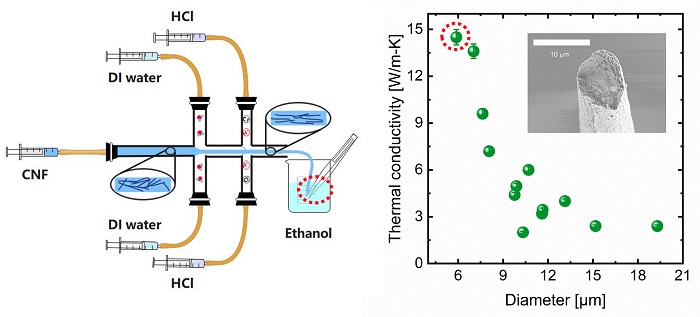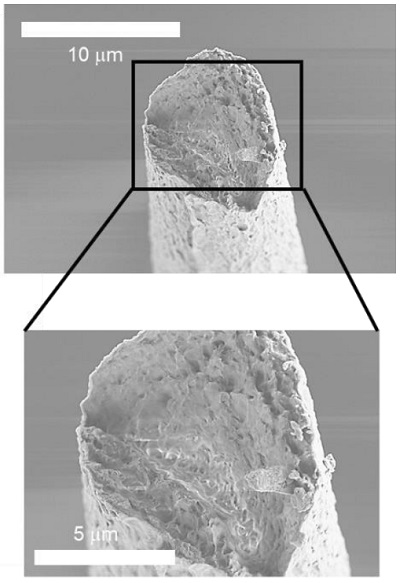Plant-derived materials such as cellulose often exhibit thermally insulating properties. A new material made from nanoscale cellulose fibers shows the reverse, high thermal conductivity. This makes it useful in areas previously dominated by synthetic polymer materials. Materials based on cellulose have environmental benefits over polymers, so research on this could lead to greener technological applications where thermal conductivity is needed.
Cellulose is a key structural component of plant cell walls and is the reason why trees can grow to such heights. But the secret of its material strength actually lies in its overlapping nanoscopic fibers. In recent years, many commercial products have used cellulose nanofiber (CNF) materials because their strength and durability make them a good replacement for polymer-based materials such as plastics that can be detrimental to the environment. But now and for the first time, a research team led by Professor Junichiro Shiomi from the University of Tokyo’s Graduate School of Engineering has investigated previously unknown thermal properties of CNF, and their findings show these materials could be even more useful still.
 Flow focusing and CNF. The apparatus to create thermally conducting CNF using disorganized CNF, water and hydrochloric acid (left). A graph showing how thermal conductivity of the sample changes with its diameter. (right).
Flow focusing and CNF. The apparatus to create thermally conducting CNF using disorganized CNF, water and hydrochloric acid (left). A graph showing how thermal conductivity of the sample changes with its diameter. (right).
“If you see plant-derived materials such as cellulose or woody biomass used in applications, it’s typically mechanical or thermally insulating properties that are being employed,” said Shiomi. “When we explored the thermal properties of a yarn made from CNF, however, we found that they show a different kind of thermal behavior, thermal conduction, and it’s very significant, around 100 times higher than that of typical woody biomass or cellulose paper.”
The reason yarn made from CNF can conduct heat so well is due to the way it’s made. Cellulose fibers in nature are very disorganized, but a process called the flow-focusing method combines cellulose fibers, orientating them in the same way, to create CNF. It’s this tightly bound and aligned bundle of rod-shaped fibers that allows heat to transfer along the bundle, whereas in a more chaotic structure it would dissipate heat more readily.

CNF. A highly magnified view of a cross section of a CNF.
“Our main challenge was how to measure the thermal conductivity of such small physical samples and with great accuracy,” said Shiomi. “For this, we turned to a technique called T-type thermal conductivity measurement. It allowed us to measure the thermal conductivity of the rod-shaped CNF yarn samples which are only micrometers (a micrometer equaling one-thousandth of a millimeter) in diameter. But the next step for us is to perform accurate thermal tests on two-dimensional textilelike samples.”
Shiomi and his team hope that their investigation and future explorations into the use of CNF as a thermally conductive material could give engineers an alternative to some environmentally damaging polymers. In applications where heat transfer is important, such as certain electronic or computational components, it could greatly reduce the consequences of discarded electronic equipment, or e-waste, thanks to the biodegradable nature of CNF and other plant-based materials.
Read the original article on The University of Tokyo.
